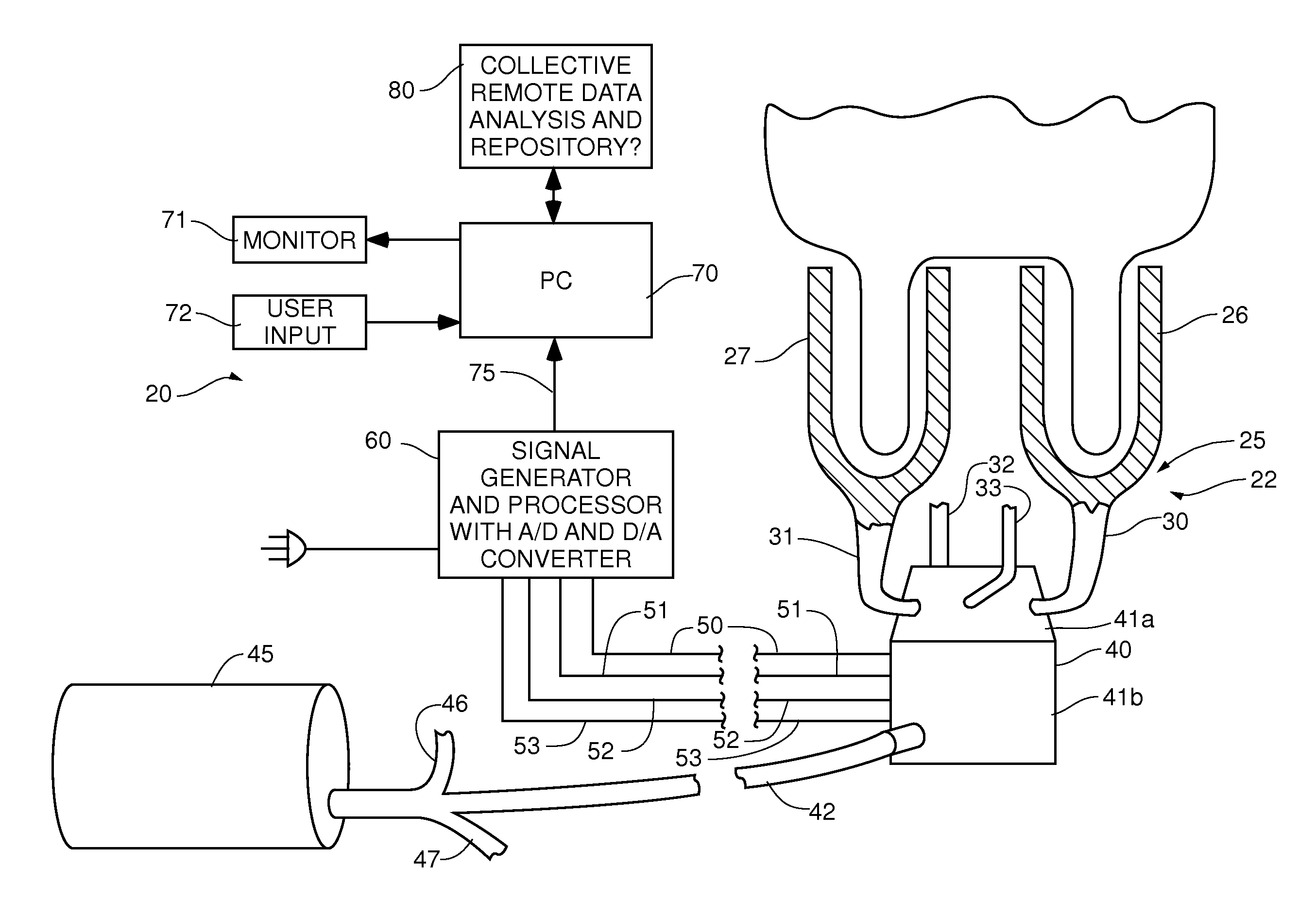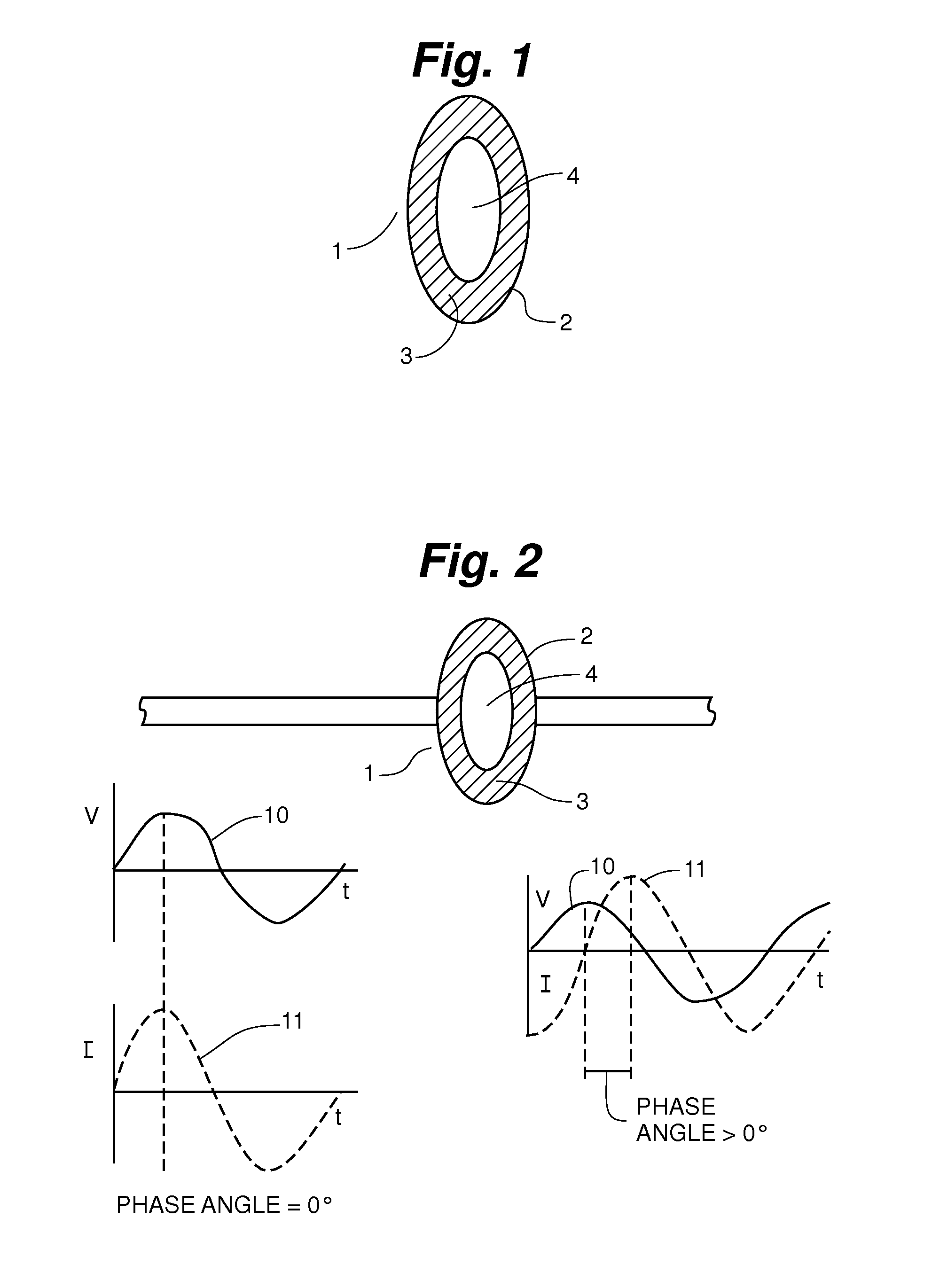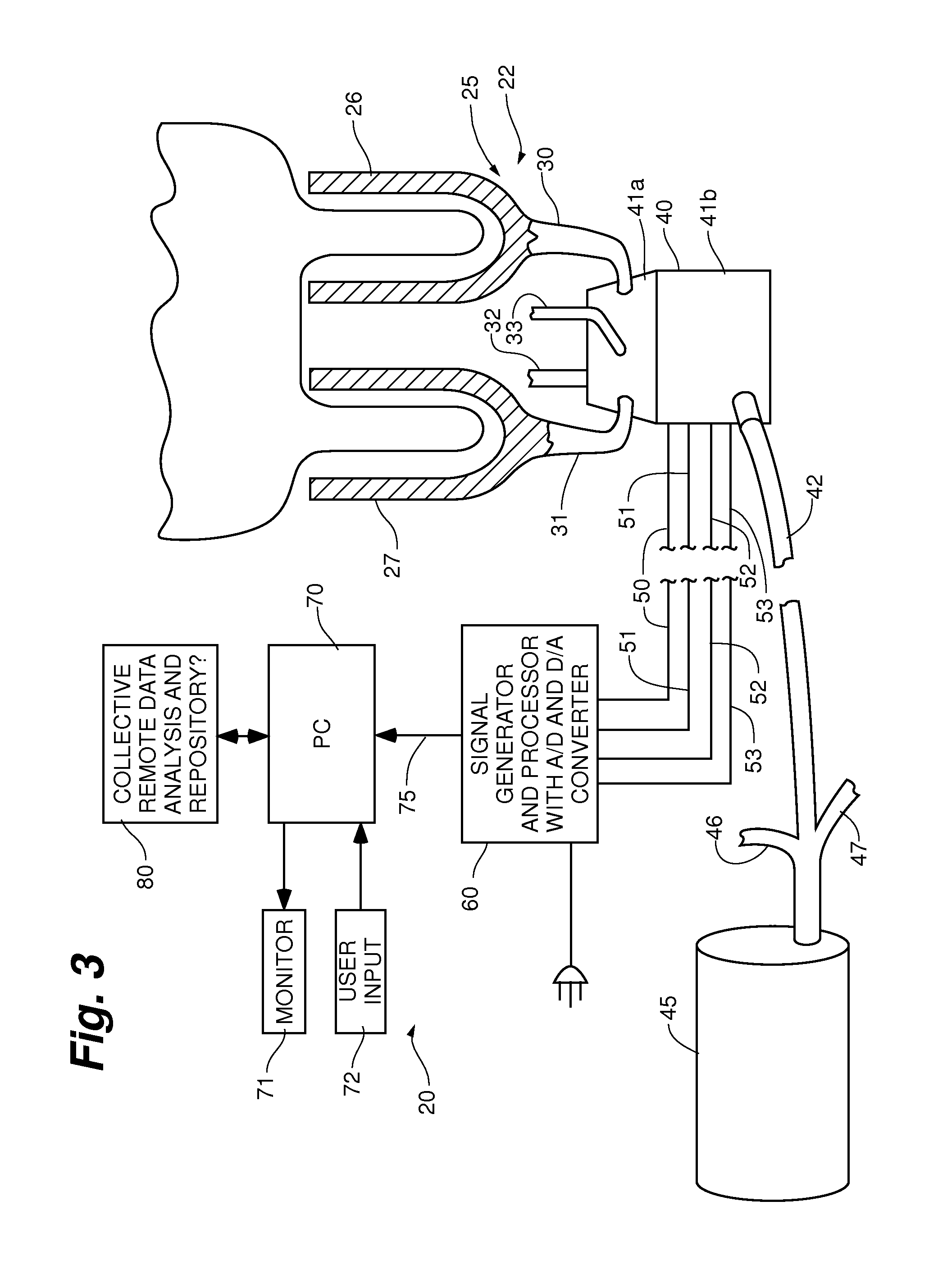System and method of sub clinical detecting mastitis
a detection system and sub-clinical technology, applied in the field of system and method for detecting disease in a dairy cow, can solve the problems of mastitis, adversely affecting milk production, milk quality, and loss of production, and increase the cost of treatment for the farmer, so as to achieve the effect of reducing the cost of treatment and increasing the cost of production
- Summary
- Abstract
- Description
- Claims
- Application Information
AI Technical Summary
Benefits of technology
Problems solved by technology
Method used
Image
Examples
Embodiment Construction
)
[0021]The electrical response of milk in whole is affected by components or constituents within the milk. The amounts or ratios of these components change as mastitis develops. By observing the characteristics of an electrical circuit passing through milk, it is possible to sense the changed composition and hence presence of a mastitic infection.
[0022]More specifically, when electrical current passes through milk, the milk impedes the flow of electrons and therefore operates as a capacitive element in an electrical circuit. As illustrated in FIG. 1, at the cellular level, milk includes extracellular fluid 1 in which is suspended cells 2 defined by lipid membranes 3. Inside the lipid membrane 3 is intracellular fluid 4. The extra- and intra-cellular fluids are electrical conductors, while the lipid membrane is an electrical insulator.
[0023]When mastitis begins to develop, the mammary gland has an inflammatory response yielding an increase in immune cells (and eventually blood cells,...
PUM
 Login to View More
Login to View More Abstract
Description
Claims
Application Information
 Login to View More
Login to View More - R&D
- Intellectual Property
- Life Sciences
- Materials
- Tech Scout
- Unparalleled Data Quality
- Higher Quality Content
- 60% Fewer Hallucinations
Browse by: Latest US Patents, China's latest patents, Technical Efficacy Thesaurus, Application Domain, Technology Topic, Popular Technical Reports.
© 2025 PatSnap. All rights reserved.Legal|Privacy policy|Modern Slavery Act Transparency Statement|Sitemap|About US| Contact US: help@patsnap.com



